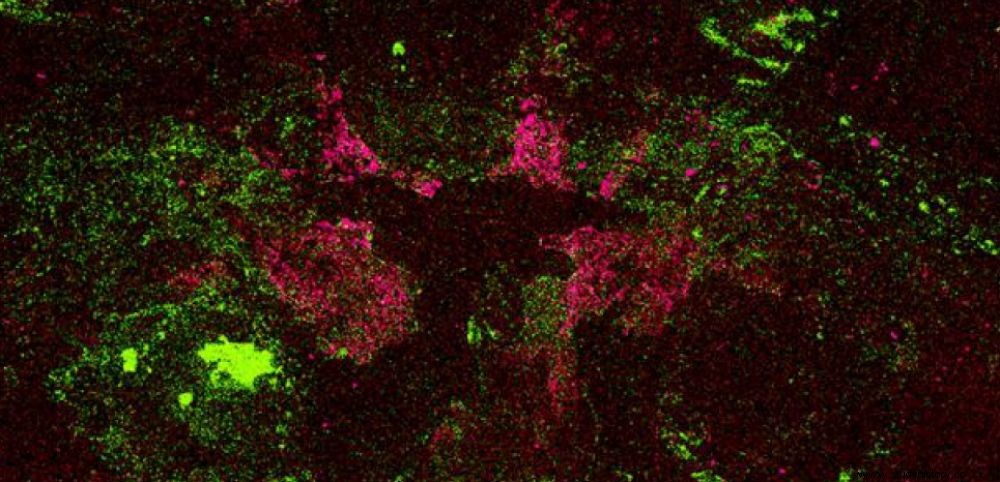 Under light microscopy the brain marks appear black.
Under light microscopy the brain marks appear black. DOGMA . Paleontologists have long claimed that brains like other soft organs cannot fossilize. A few years ago this dogma was somewhat shaken with the discovery of a 300 million year old fossilized shark brain. This time, it is squarely undermined with these seven fossils described in the journal Current Biology , each housing a portion of preserved brain matter. Below is a well-preserved fossil of Fuxianhuia protensa 12 cm long. (Credit Xiaoya Ma, London Museum of Natural History).

Exceptional conditions required
The fossils discovered come from Southwest China, from the Chengjiang Shales site, and all belong to the same species Fuxianhuia protensa. It is an arthropod that lived during the Cambrian period, 520 million years ago, and looked like a 4-15 cm long shrimp that roamed the seabed. The scientists analyzed them using a scanning electron microscope and identified in each traces of what was undoubtedly a brain or at least saw the primitive character of these animals of a central nervous system. The brains were preserved as films of flattened carbon, which in some fossils were partially covered by tiny crystals of iron pyrite. In another article, the researchers sought an explanation for the exceptional preservation of these organs. One of the only valid explanations is that the shrimp were suddenly buried, during a landslide, in mud bathed in oxygen-poor water, thus preventing both scavenger attacks and putrefaction.

Superimposed tracing of two brain prints. Strausfeld et al. and Current Biology.
Then comes the second stage:"the one where almost all brains fail is to resist the pressure of thick and heavy mud "explains Nicholas J. Strausfeld, one of the study's co-authors, who was for a long time one of the few specialists to think that brains could fossilize and who was mocked for this theory. For being able to do so , the brain of F. protensa must have been remarkably dense. In fact, that of arthropods living today, composed of a network of tight nerve cells and fat, is indeed and that of these primitive shrimp must have been even more so. "With these prerequisites the process begins; the brain maintains its overall integrity which leads to its progressive flattening and preservation" summarizes the researcher. And he concludes, a bit vindictively:"People, especially scientists, make assumptions. The fun thing about science, actually, is being able to tear them down" .
